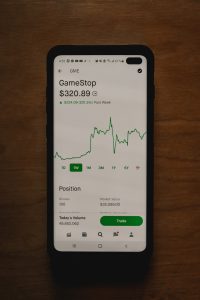Flag patterns are a common occurrence in the forex market and can provide valuable insights for traders looking to make profitable trades. A flag pattern is a continuation pattern that occurs after a strong trending move in the market. It is called a flag because it resembles a flag on a flagpole, with the flagpole representing the initial trending move and the flag representing a period of consolidation before the price continues in the same direction as the initial move.
Identifying a flag pattern is the first step to successfully trading this pattern. The flag pattern consists of two main components: the flagpole and the flag itself. The flagpole is formed by a strong trending move, either upward or downward, and represents the initial impulse that drives the price in a certain direction. The flag is a period of consolidation that follows the flagpole and is characterized by relatively smaller price movements and decreasing volume.
To identify a flag pattern, traders should look for a strong trending move, followed by a period of consolidation. The flag should have clear boundaries, usually formed by two parallel trendlines, and a duration of at least a few days. During the consolidation phase, the price should not deviate significantly from the boundaries of the flag, indicating a lack of strong buying or selling pressure.
Once a flag pattern is identified, traders can use various technical indicators and tools to determine the potential direction and strength of the next move. One popular approach is to measure the length of the flagpole and project it from the breakout point of the flag. This provides an estimate of the potential target for the next move. Traders can also use oscillators, such as the Relative Strength Index (RSI), to gauge the momentum of the price during the consolidation phase. A bullish flag pattern would typically show a bullish divergence on the RSI, indicating potential upward momentum, while a bearish flag pattern would show a bearish divergence, suggesting downward momentum.
Trading a flag pattern successfully requires a combination of technical analysis and risk management. Traders should wait for a confirmed breakout from the flag before entering a trade. A breakout occurs when the price breaks above or below the boundaries of the flag with a significant increase in volume. This indicates that the consolidation phase is over and that the price is likely to continue in the direction of the initial trend.
To manage risk, traders should set a stop-loss order just below the breakout point for a bullish flag pattern or just above the breakout point for a bearish flag pattern. This ensures that if the trade goes against them, the losses will be limited. Traders can also use trailing stops to protect profits as the price continues to move in their favor.
It is important to note that not all flag patterns lead to successful trades. False breakouts can occur, where the price briefly breaks out of the flag but then quickly reverses. To avoid false breakouts, traders can wait for a retest of the breakout level before entering a trade. This provides additional confirmation that the breakout is valid.
In conclusion, trading flag patterns successfully requires a combination of technical analysis, risk management, and patience. By identifying and confirming the pattern, using technical indicators to gauge momentum, waiting for a confirmed breakout, and using stop-loss orders and trailing stops, traders can increase their chances of making profitable trades. However, it is important to remember that no trading strategy is foolproof, and traders should always be prepared for potential losses.





